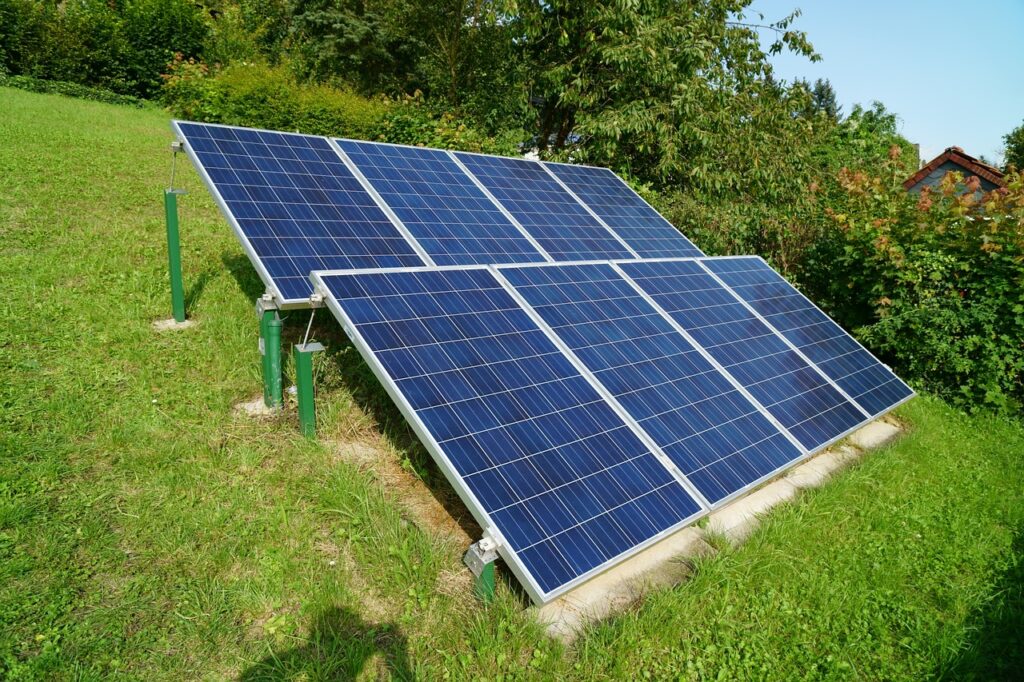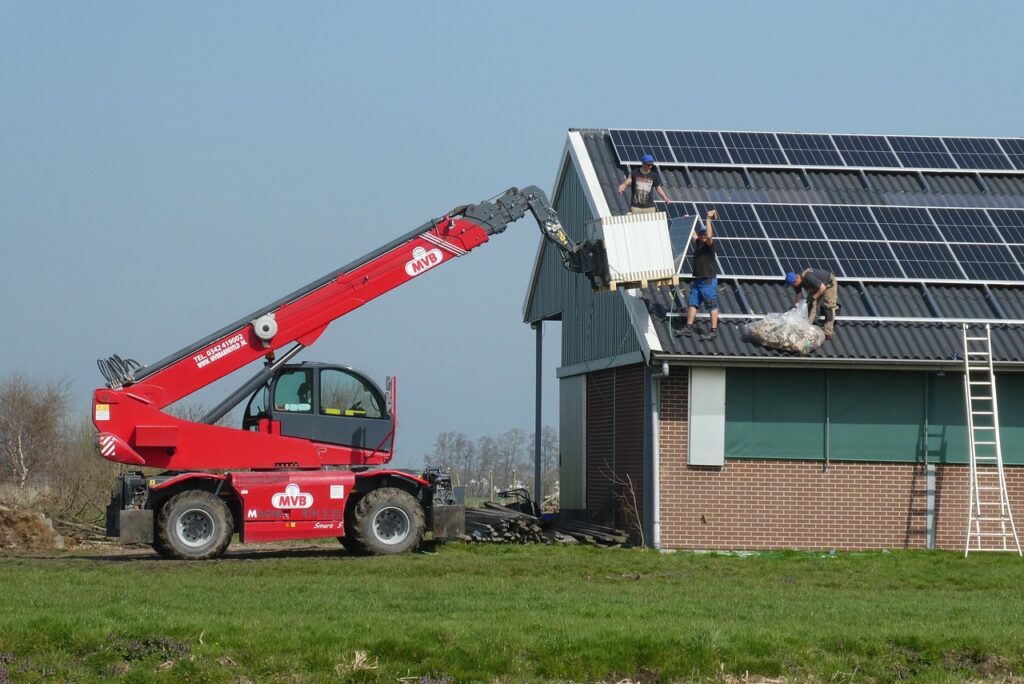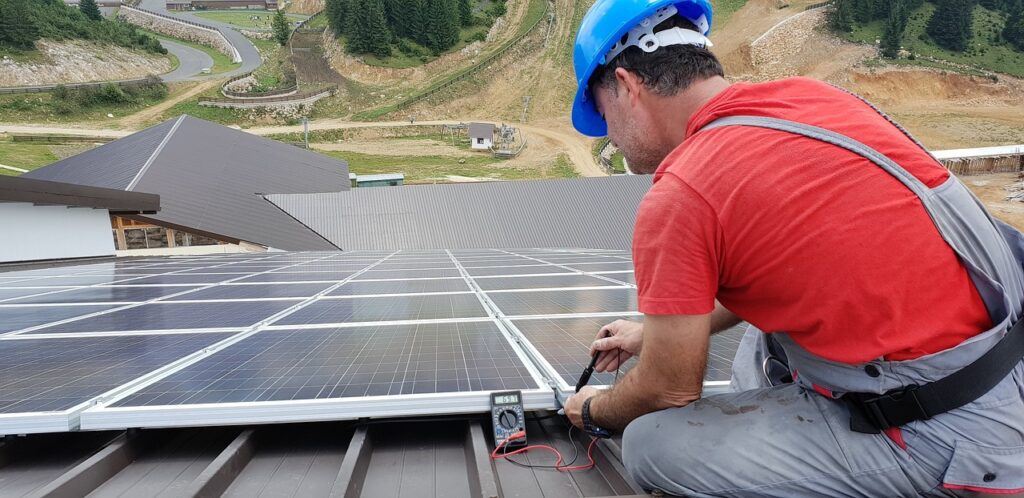
There’s no doubt that solar installations come with a significant initial cost, so naturally, most people considering going solar question the real benefits of their investment.
A solar installation costs around $400,000 – $500,000 per acre as a ballpark figure. And while the average farm or agriculture business won’t require nearly as much of this, the costs can still surpass $100,000.
The great news is that Colorado’s net metering policy, combined with current government incentives and tax credits, can lead to significant energy bill savings. This means achieving a full return on your investment (ROI) might be quicker than expected.
Dive into our detailed guide and use our ROI calculator to see how different factors impact the cost and return on solar systems, ensuring you make an informed decision.
In a Nutshell
- Equipment and installation costs, maintenance, and repairs affect a solar system’s ROI.
- The cost of a solar system can be recouped via energy bill savings, government incentives, and tax credits.
- Use our ROI solar calculator to figure out your solar ROI.
- The solar payback period refers to how long it will take you to recoup the cost of your solar installation.
- For farms and agricultural businesses, 100% ROI can be easily gained within two years – often within the first year.
What Can Affect a Solar Panel’s ROI?

Before calculating your solar system’s ROI, you should first understand what actually affects it. There are several significant factors that play into this, so let’s delve into the detail.
Equipment Costs
One of the biggest factors that will influence your ROI is the cost of the equipment itself. There is no one-size-fits-all approach to solar panels, so one farm’s costs can look very different from another.
Here’s what contributes to the overall cost:
- Size of the solar installation: Solar systems come in all shapes and sizes, so the cost will vary hugely. Of course, a field full of solar panels is going to cost a lot more than a few racks worth.
- Solar panels: It’s not just the size and number of solar panels you have installed, it’s the type of racking (how it’s mounted) and the quality and brand of the solar panels that you opt for.
- Other components: This refers to everything that makes the solar system work. For example, inverters and optimizers are required, as well as cables and wiring. The further you install your system from the meter, the higher these costs will be.
- Solar batteries: Solar power storage is becoming increasingly common, especially if off-grid systems need to be powered. Batteries are still expensive, so they can add a significant amount to the overall cost. Furthermore, they will likely need replacing at some point, adding further to the cost.
Installation Costs

The installation of your system is the next big outlay. And the total amount for this will vary depending on where you choose to install the panels and how much groundwork needs to be done.
For example, a clear and flat field that’s close to the meter will result in lower installation costs than an uneven location with obstacles that need to be removed.
If you want a roof installation, is the roof structurally sound enough to support the additional weight? Or do further adjustments need to be made? These are all questions that need to be answered to estimate the costs.
Permits and Permissions
Thankfully, Colorado residents don’t have to pay a great deal to get their permit to install solar. The state caps this amount at $500 for residential systems and $1,000 for commercial systems.
For a farm or agricultural business, you will pay $1,000 for the permit.
Solar Panel Placement
Solar panel placement is very important if you want to get the best and fastest ROI.
You must ensure that the panels are exposed to as much direct sunlight as possible throughout the day. Indirect sunlight is still very effective, but not quite as good as direct light.
It’s very straightforward! The more light your panels receive, the more energy they will generate. Therefore, avoid installing solar panels in areas that are concealed by shadow during parts of the day, or next to objects such as buildings or large trees that may cast a shadow.
Luckily, Colorado is a perfect state for solar since it receives over 300 days’ worth of sunshine per year. That means shadow is going to be your chief concern when choosing your installation site.
Maintenance and Repair

Unless you have installed a tracking system (where the solar panels have mechanisms that automatically move and tilt them to always face the sun), you will find that a solar installation costs very little to maintain.
If you look after your panels, they are unlikely to need any major repairs throughout their life and typically only cost a couple of hundred dollars at most per year in maintenance.
How Do Solar Panels Recoup Their Investment Cost?
Now, we move on to the good stuff!
Solar panels recoup their costs in three key areas:
- Tax credits and incentives
- Energy bill reduction
- The sale of excess energy
Government Tax Credits and Incentives

The biggest and fastest way to get that ROI percentage up is by making certain you’re taking advantage of all the current incentives that are out there to encourage you to go solar.
There are some fantastic US-wide incentives happening right now, and Colorado has a few more to sweeten the deal even further.
Remember, incentives vary from state to state, therefore, the solar ROI by state will also vary.
REAP Grant
This is hands down the best incentive around, but it could be a wise idea to get in there quickly as the final application for the current grant amounts and rules will end in 2024. Beyond the end of September 2024, we don’t yet know what future grant thresholds will be and there is always the risk they could be lowered.
The REAP grant is available across the USA and is funded by the IRS’s Inflation Reduction Act. It has been designed specifically for farmers and agricultural and rural businesses.
The grant can provide funding for a whopping 50% of the cost of your solar installation (so that’s an ROI of 50% right away!) capped at $1 million.
The REAP grant is awarded by application, and we’re pleased to say that all of our clients at 8760 Solar have been successful in gaining theirs.
Federal Solar Tax Credit
Another USA-wide incentive, the federal solar tax credit provides a 30% investment tax credit (ITC) as a reduction of your federal tax liability.
The amount is calculated as a percentage of the total cost of your solar installation.
For example, if your installation costs $100,000, you will get $30,000 as the ITC.
The ITC can be boosted further if you fulfill the following criteria:
- Receive an additional 10% as a Domestic Content Bonus if your solar installation contains 40% or more US-produced steel, iron, and other components.
- A 10% increase can also be had if your installation is within a designated energy community.
- Likewise, another 10% is offered if located within a low-income community or on Indian land.
Colorado Enterprise Zone Program

As we mentioned, Colorado is very keen to promote the adoption of solar energy and is doing what it can to make it more accessible.
The Enterprise Zone Program is designed to stimulate development in deprived and economically depressed areas of the state.
If your installation is situated within one of 16 designated enterprise zones, you can get up to 6% in tax credits.
To understand more about the available credits and incentives, check out our full write-up on the subject.
Power Bill Reduction and Net Metering
Solar energy has a massive impact on your energy bills (which are set to keep rising). Not only can you produce enough power to run your home and your business operations, but any excess power can be sold to the grid in exchange for credits.
Colorado has what’s known as “true net metering” in place, which is the most advantageous setup for sending power to the grid.
Essentially, for every kWh worth of power that you send to the grid, you receive 1kWh back as an energy credit.
What this means is that you can use the energy from your solar panels when they are in operation (during sunlight hours) and use your accrued energy credits when they are inoperational (during darkness).
Overall, this has the ability to reduce your power bills by up to 96%! The last 4% consists of the service fees and charges you have to pay your utility which is unavoidable regardless of whether or not you draw power from the grid.
How to Calculate Your ROI and Solar Payback Period

The solar payback period is the length of time it takes to fully recoup the total cost of the installation. In other words, how long you have to wait until you’ve gained 100% ROI.
With so many factors at play, pinpointing an exact payback period for your solar system can be challenging, especially before installation. However, you can get a good estimate to figure out when you’ll likely recover your costs.
Calculating Solar Payback Period
The get your solar payback period, you need the following information:
- The total initial cost of the equipment and installation of your solar system
- How much the annual savings & credits will be – this includes the projected energy bill savings, incentives, and tax credits
Now perform the following equation:
Total initial cost / annual savings & credits = solar payback period
For example:
- Your solar installation will cost you $100,000 in total
- Your energy bill is usually $30,000 per year but your solar system will save you $20,000
- You get the 30% ITC ($30,000)
- Total annual saving = $50,000
$100,000 / $50,000 = 2
This means you’ll achieve 100% ROI after two years.
These savings figures are actually conservative. Don’t forget that solar energy can save you up to 96% on your bills, and if you get the REAP grant, that’s 50% of your costs back right away! Therefore, you could get 100% ROI well within the first year.
Total Solar Panel ROI Calculator
To start, it’s important to note that total ROI is calculated across the whole lifespan of your solar panels. Remember, they can last 25 – 30 years, however, for the calculation, the length of the warranty is usually considered. This is because it’s impossible to determine exactly when solar panels will become ineffective.
To calculate the ROI for solar panels, you need the following information:
- Total cost of the project, including equipment and installation, and projected maintenance costs over its lifetime.
- At 8760 Solar, we also factor in an annual degradation of 0.85% across the total lifespan. This is because solar panels reduce slightly in efficiency as time progresses.
- The total cost benefit of your installation for its lifetime, including how much you have saved or intend to save on your energy bills.
- And any incentives and tax credits. Be sure to ask your CPA for advice when tax time comes around.
Next, you must get your net benefit figure by subtracting the total project cost and annual degradation from the total benefit cost.
Then, to get your ROI percentage, you must use this equation:
Net Benefit / Total Cost X 100%
Convinced to Go Solar? Talk to 8760

There’s no doubt that solar energy gives you a great return on your investment – fast!
And with the projection of increased energy bills over the coming years, there’s no better time than now to get your solar project started.
At 8760 Solar, we can help you determine what your ROI will be and how quickly you can get your money back.
When you get in touch, we will arrange a time to come and conduct a full analysis of your farm, which includes determining the best type of solar setup for your needs, the best placement to maximize efficiency, and what you can look forward to saving over the coming years.
To kick things off, text “READY” to 719 470-0254 or contact us via email: sales@8760solar.com. We’re looking forward to talking with you!
Frequently Asked Questions
Are Solar Panels Worth the Investment?
Solar panels are absolutely worth the investment. You can get 100% ROI within a couple of years (if you’re a business) or even less if you take advantage of the available incentives and tax credits. Furthermore, solar energy can achieve up to 96% reduction in your energy bills, which is huge.
What is the Average ROI on Solar Systems in Colorado?
The average ROI on solar panels is about 10% per year. 100% Solar ROI for residential properties tends to be gained within ten years. For businesses, ROI can be achieved much faster, thanks to the available government incentives. In best cases, 100% ROI can be gained within the first year.
How to Calculate ROI on Solar Panels?
To calculate the total ROI for a solar system, you must first get your net benefit cost by subtracting the total project cost from the total benefit cost. Then, divide the net benefit cost by the total solar system’s costs, and you will get your ROI figure.
Is Solar ROI for Farms and Businesses Worth It?
ROI for solar panels on farms and agricultural businesses can be achieved really quickly – often within the first year of the solar system’s operation. Considering the recent hikes in operational costs and energy bills, this makes solar energy 100% worth it.
What is a Good ROI For Solar Panels?
A good ROI for solar panels is 10%. However, businesses can get a much higher percentage (sometimes 100% in the first year), thanks to the available government grants and tax credits.
